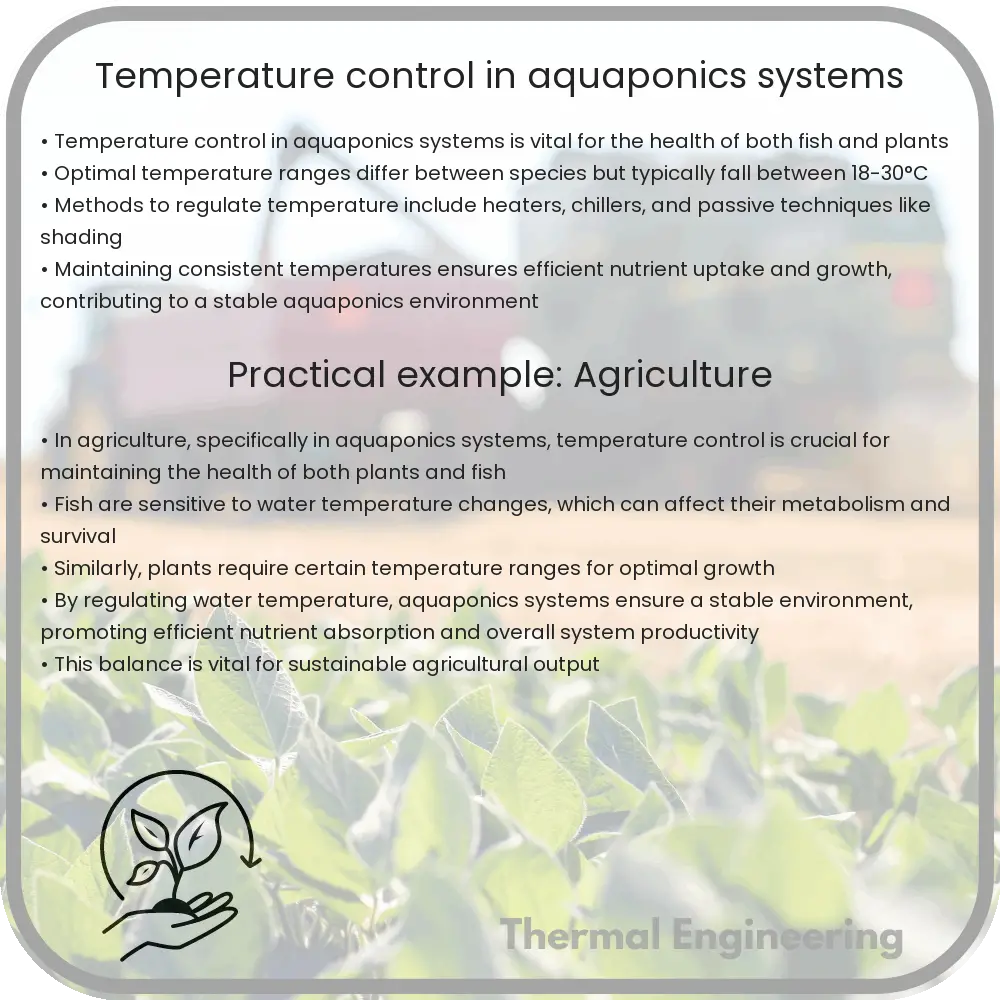Learn how temperature control is crucial for optimizing fish health, plant growth, and bacterial activity in aquaponic systems.

Understanding Temperature Control in Aquaponics Systems
Aquaponics combines aquaculture (raising fish) and hydroponics (the soil-less growing of plants) to create a more efficient and sustainable agricultural method. Temperature control in aquaponics systems is critical because it affects the health and growth of both fish and plants. The right temperature ensures optimal metabolic rates for fish and ideal conditions for plant growth.
Importance of Temperature in Aquaponics
In aquaponics, temperature impacts several system components:
- Fish Health: Each fish species has an optimal temperature range. Deviations can lead to stress, reduced immunity, and even death.
- Plant Growth: Similar to fish, each plant species thrives at certain temperature ranges. Extreme temperatures can impair photosynthesis and nutrient uptake.
- Bacterial Activity: Nitrifying bacteria, which convert ammonia from fish waste into nitrates for plants, have specific temperature preferences. Effective bacterial activity is crucial for maintaining water quality.
Optimal Temperature Ranges
The perfect temperature range varies based on the types of fish and plants being cultivated. However, a general guideline for many common aquaponic setups involves maintaining water temperature between 18°C (64°F) and 30°C (86°F). For instance:
- Tilapia: Prefers temperatures between 24°C and 29°C.
- Lettuce: Grows best around 20°C to 24°C.
Methods for Controlling Temperature
Temperature regulation in aquaponics can be achieved through several methods:
- Insulation: Proper insulation helps to maintain a consistent temperature by reducing heat loss in colder climates and keeping the system cool under hot conditions.
- Water Heaters and Chillers: Electric or gas heaters are used to warm the water during cold months, while water chillers can help cool the water in extreme heat.
- Aeration: Increasing oxygen levels in the water through aeration helps stabilize the temperature and improve the overall health of the system.
- Shade Covers: In hot climates, shade covers can prevent water from overheating due to excessive sun exposure.
Monitoring and Automation
Consistent monitoring and adjusting of water temperature are essential for the success of an aquaponics system. Modern aquaponics often utilize automated systems equipped with sensors and thermostats to continuously monitor the temperature. These systems can automatically adjust heaters and chillers to maintain the desired temperature range, ensuring optimal conditions with minimal manual intervention.
Conclusion
Effective temperature control plays a crucial role in the successful operation of aquaponics systems. By understanding the thermal needs of the fish and plants in the ecosystem and employing appropriate temperature regulation technologies, practitioners can ensure healthy growth and efficient production. Whether through low-tech solutions like insulation and shade or high-tech automation systems, maintaining the right temperature is an essential aspect of aquaponic farming.